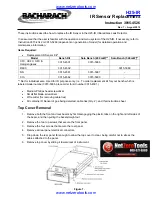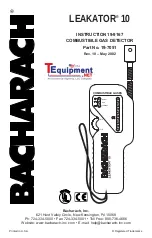
CS-990 GB
1
CS-990 OPERATING INSTRUCTIONS
INTRODUCTION
These metal detectors are recognised as the finest detectors available. They are designed with lasting
quality, high technology input, and above all, value for money in mind.
The only way to realise this value and quality is to carefully study and understand this instruction
manual. You will then be able to make use of all of the advantages designed into your detector. It is
also strongly recommended that you experiment with the detector’s operations indoors in air, with
various test samples, in order to learn to identify and understand the detector’s capabilities and
responses. It is best to lay the detector on a table with the search head off the end and to pass test
objects across the search head to best stimulate actual responses.
FEATURES
Before proceeding to the controls and the operating procedure it is important to understand the
principles of operation of the CS-990.
The CS-990’s principle features are :
Audio Ground Exclusion :
Elimination of ground effect.
Meter Discrimination :
Rejection of iron and small pieces of silver paper via
the signal meter.
Meter and Sound Discrimination : Rejection of iron and small pieces of silver paper via
the signal meter and loudspeaker and/or headphones.
GROUND EXCLUSION
What is ground exclusion ?
On some sites mineralisation caused by iron deposits or iron oxides or wet salt sand makes it
difficult to operate a detector successfully. The effect of these minerals is termed "GROUND
EFFECT". In practice, the signal of the detector alters if the search head is not kept exactly steady
during sweeping or the gap between the search head and ground varies. If the tuning level increases
upwards, as on inland sites when the detector head is inadvertently raised, the signal may be
confused with a target signal.
The CS-990 offers two modes of ground exclusion :
- A preset ground exclude setting for use on mineralised inland sites, G I.
- A variable ground exclude setting for use on wet salt sand beaches, or for total iron
rejection on non-mineralised inland sites, G II.































